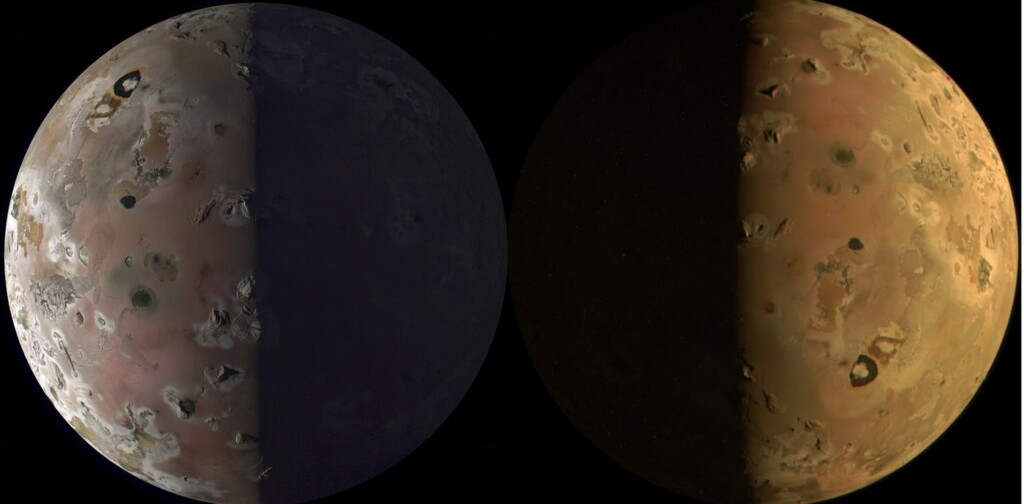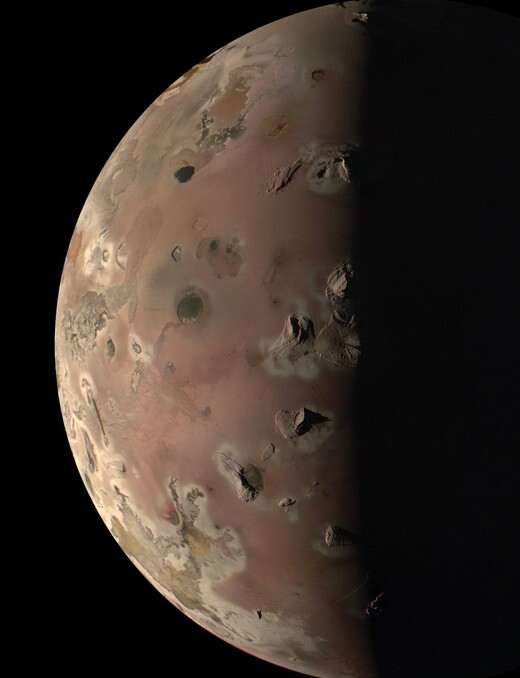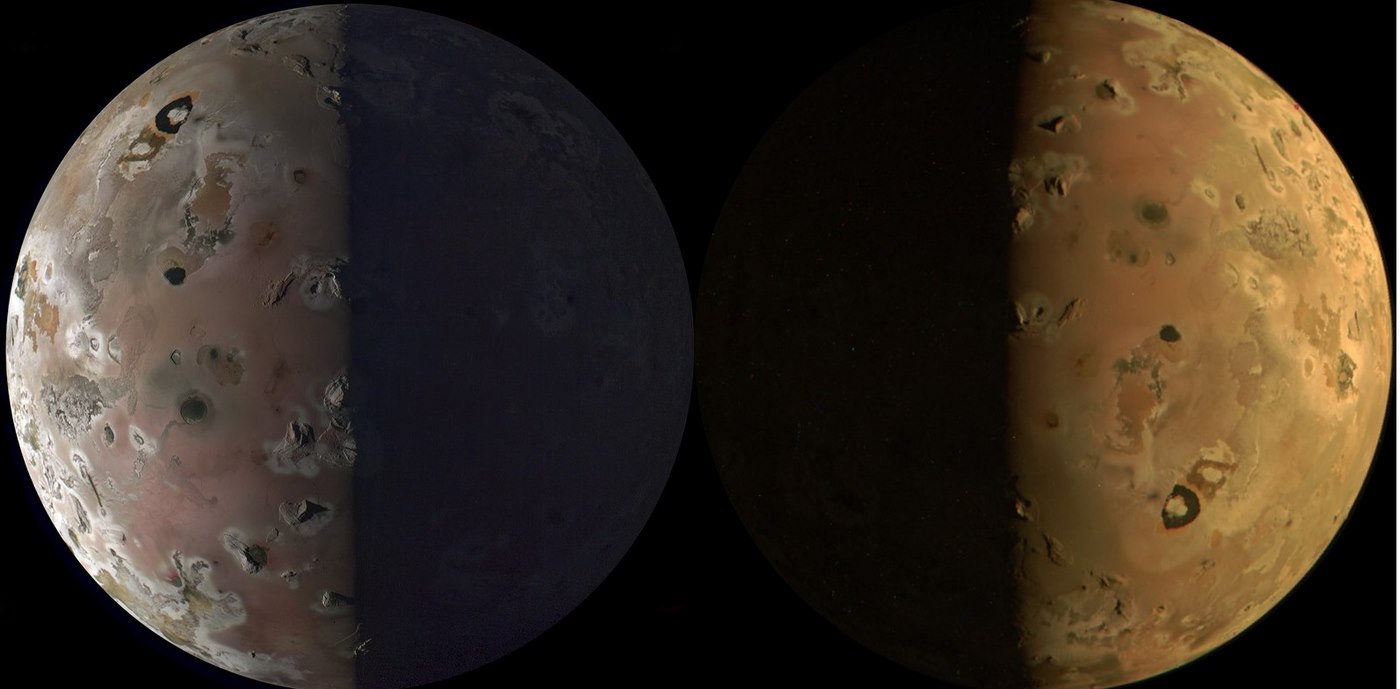
Incredible pictures show Jupiter’s volcanic moon Io in stunning detail in the closest flyby in twenty years.
NASA’s Juno space probe came within roughly 930 miles (1,500 km) from the surface of the most volcanic world in our solar system on December 30th.
The space agency explained this pass, and others at the start of February are expected to allow Juno instruments to generate “a firehose of data.”
The orbiter has performed 56 flybys of Jupiter and documented close encounters with three of the gas giant’s four largest moons, Io, Ganymede, and Europa.
“By combining data from this flyby with our previous observations, the Juno science team is studying how Io’s volcanoes vary,” said Juno’s principal investigator, Scott Bolton of the Southwest Research Institute in San Antonio.
“We are looking for how often they erupt, how bright and hot they are, how the shape of the lava flow changes, and how Io’s activity is connected to the flow of charged particles in Jupiter’s magnetosphere.”
The probe’s Jovian Infrared Auroral Mapper (JIRAM), which takes images in infrared, collected the heat signatures emitted by the 400 active volcanoes and additional extinct calderas covering the moon’s surface.
ALSO CHECK OUT: The First Amateur Astronomer to Ever Discover a New Moon – And it’s Orbiting Jupiter
Io’s volcanism is responsible for many of its unique features. Its volcanic plumes and lava flows produce large surface changes and paint the surface in various subtle shades of yellow, red, white, black, and green, largely due to allotropes and compounds of sulfur.

“With our pair of close flybys in December and February, Juno will investigate the source of Io’s massive volcanic activity, whether a magma ocean exists underneath its crust, and the importance of tidal forces from Jupiter, which are relentlessly squeezing this tortured moon,” said Bolton.
MORE SPECTACULAR MOONS: For New Rover, NASA is Swapping Buggy Shape for a Giant Snake in Hopes it Can Explore Icy Moon of Saturn
Per other studies published on Io, the relentless squeezing comes from a mixture of forces, some known, others unknown. It’s known that the interior is subject to massive friction from the gravitational pull of mighty Jupiter and the other Galilean moons of Europa, Callisto, and Ganymede.
SHARE This Awesome Science In Our Cosmic Neighborhood…




















